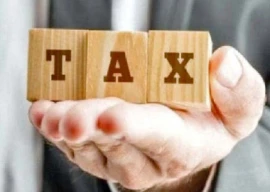
Foreign direct investment (FDI) increased 15.1% in the first nine months of 2015-16 on a year-on-year basis, according to statistics released by the State Bank of Pakistan (SBP) on Monday.
Pakistan received $957.4 million in FDI in July-March, which is $125.2 million higher than the investment received in the same period of the preceding fiscal year. More than half of the FDI in the first three quarters of 2015-16 originated from China alone.
Is Pakistan really a dream destination for China?
FDI stood at $161.7 million in March, up 39.4% from the FDI received in the same month of 2015.
Although the increase in the FDI appears satisfactory in percentage terms, a closer look at statistics reveals the year-on-year growth remained “concentrated in cross-border mergers and acquisitions” for at least the first six months of the fiscal year.
According to the SBP’s latest quarterly report, the FDI in greenfield projects stayed “virtually flat” in nominal terms in Jul-Dec.
The year-on-year growth in net FDI is mainly on the back of investment from China. It amounted to $515.9 million in Jul-Mar, up almost 167% from a year ago. The share of Chinese investment in the net FDI that Pakistan has received in Jul-Mar stands at almost 53.8%, which is twice its share of 23.2% one year ago.

In fact, excluding Chinese investment altogether would result in the FDI dipping 30.9% on a year-on-year basis. This means the rise in the FDI from China has offset the decrease in direct investments from the rest of the world in the first nine months of 2015-16.
The United States has traditionally been a big source of FDI, but US investors are now losing their interest in Pakistan. As opposed to making fresh investments, they are now pulling out their money instead.
Investment: Chinese company keen to set up oil refinery
US investors have pulled out $41.7 million from Pakistan in the first nine months of 2015-16, although net inflows from the world’s largest economy amounted to $144.6 million in the same period of the last fiscal year.
Pakistan has faced low levels of foreign investment in recent years. The SBP has called an increase in FDI ‘imperative’ for the sustainability of the economy’s external sector.
Other major outflows of FDI were from Saudi Arabian ($70.3 million), Egyptian ($34 million) and German ($32.2 million) investors in Jul-Mar, SBP data shows.
The largest net outflow of FDI in Jul-Mar was recorded in petrochemicals ($136.1 million) followed by metal products ($43.9 million) and IT services ($23.3 million).
China was followed by the United Arab Emirates ($126.1 million), Hong Kong ($120.4 million) and Italy ($81.3 million) as the largest contributors to the FDI in Jul-Mar.
The largest increase in FDI in Jul-Mar was in the category of power, which attracted $471.6 million, up 240% from a year ago. Other sectors that attracted substantial FDI in the first nine months of 2015-16 were oil and gas exploration ($223.8 million) and telecommunications ($73.4 million).
Pakistan received FDI of $709.3 million in 2014-15, which was 58.2% less than the FDI received in the preceding fiscal year. Largest contributor to the FDI during 2014-15 was the United States ($238.7 million), followed by China ($229.5 million) and the United Arab Emirates ($222.4 million).
Many foreign investors have left Pakistan for good in recent years because of the energy crisis and bad governance. According to the latest annual report of the SBP, FDI divestments have taken place in cement, metal and pharmaceuticals.
Pakistan Army leaving no stone unturned to protect Chinese investment
“Some of these divestments highlight policy-related constraints in the manufacturing sector,” the SBP said while referring to Tuwairqi Steel that has shut down its production in Pakistan because of its dispute with the government over the pricing of gas.
Published in The Express Tribune, April 19th, 2016.
Like Business on Facebook, follow @TribuneBiz on Twitter to stay informed and join in the conversation.


1734780406-0/Untitled-(11)1734780406-0-165x106.webp)
1734778885-0/Untitled-(10)1734778885-0-165x106.webp)
1734776708-0/Untitled-(8)1734776708-0-165x106.webp)










1734587529-0/Express-Tribune-(1)1734587529-0-270x192.webp)







COMMENTS (9)
Comments are moderated and generally will be posted if they are on-topic and not abusive.
For more information, please see our Comments FAQ